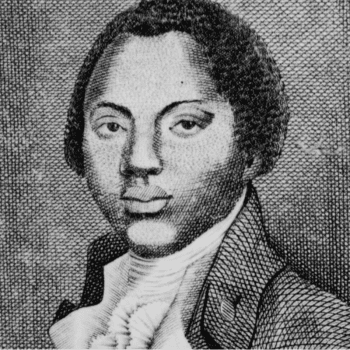Last week I wrote about the challenges colonial American missionaries faced when trying to evangelize slaves without fundamentally challenging the institution of slavery. Starting in the eighteenth century, growing numbers of Christians began to express concerns about the immorality of slavery, at least slavery as practiced in the Americas. But when they turned to Scripture, these antislavery Christians were perplexed to find little support for an argument against slavery “in the abstract.” Given the existence of slavery in the Bible, and the relative silence about the institution by Jesus, antislavery arguments generally had to turn on the violence and immorality that was endemic to the system.
Proslavery advocates, especially in the antebellum period, argued that slavery was not inherently immoral, and that if there were abuses in the system, they should be reformed. Antislavery writers pointed to several key elements in the slave system that violated New Testament ethical codes, by definition. Among these were the massive practice of slave catching in Africa (and to a lesser extent, among Native Americans), the horrid conditions of the Middle Passage across the Atlantic, the indiscriminate breakup of families (in which couples could often not get legal recognition of their marriages, anyway), and the widespread physical and sexual abuse of slaves by masters and overseers.
Certain colonial laws actually sanctioned lurid punishments against slaves, and specifically exempted “white” (or sometimes also called “Christian”) servants from those punishments. Among the most horrifying such sanctions were the orders, across multiple colonies, to brand and/or dismember runaway slaves.
The South Carolina legislature pioneered these laws in the 1690s, mandating that for the first offense, male and female slaves would be branded with an “R” on the cheek. For a second offense, female slaves would have an ear cut off, while male slaves would be castrated. It is not clear how often these punishments were actually carried out, but one episode of slave castration caused a furor in a South Carolina Baptist congregation in 1710. The church was torn by arguments about whether to discipline a member who had castrated a runaway. We don’t know for sure what happened in the case, but some of the church’s leaders explained that enforcing the law would prevent “vagrancy, theft, robbery, insurrections, and outrages” by the slaves. The Old Testament permitted them to enact more severe punishments for a “heathenish servant,” they said, since blacks were “rude, unpolished people, whose nature requires a stricter hand.”
Just how pervasive was individual abuse toward slaves? Such violence commonly occurred in private settings, much of it of a nature that masters and overseers would likely want to hide. But under this South Carolina slave code, if masters chose to inflict grotesque punishments on their slaves, they had official backing from the government. This is just one aspect of American slavery that suggests that immorality and cruelty was built into the very heart of the system.
Friends, if you haven’t already done so, I encourage you to sign up for the my newsletter. Each newsletter will update you on what’s happening in the world of American religious and political history. It will contain unique material available only to subscribers, and each will help you keep up with my blog posts, books, and other writings from around the web. [Your e-mail information will never be shared.] If you’re interested, you can sign up here.












